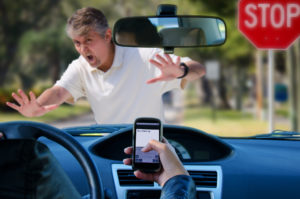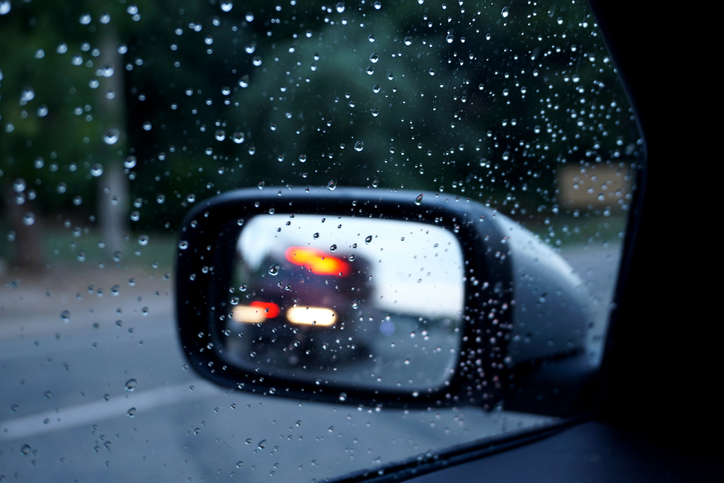I got a Failure to Yield Ticket what should I do?


The purpose of right-of-way laws is to provide order and prevent accidents in situations where traffic is merging or crossing paths or pedestrians are crossing roadways.
You can get a right-of-way ticket even if you weren’t involved in an accident. But oftentimes, police issue right-of-way tickets after concluding that a driver’s failure to yield the right-of-way was the cause of a collision.
Types of failure to yield tickets
There are several types of failure to yield tickets and they are quite common among moving violations. These include:
- Failure to yield the right-of-way at an intersection
- Failure to yield the right of way when making a U-turn or making a left turn
- Failure to yield the right-of-way when you are at a stop sign but other vehicles do not have a stop sign
- Failure to yield to an emergency vehicle
- Failure to yield the right of way to a pedestrian
What is the cost for failure to yield right of way ticket with an accident?
The typical fine for a failure to yield ticket is between $200 and $300 with a one-point conviction on your record and subsequently an increase in your car insurance. Taking traffic school keeps the point off of your record and your insurance rates unchanged and your good driver discount intact.
Right of Way at Four-Way Stop Intersections
The right-of-way rules for four-way stop intersections (stop signs or blinking red lights) are similar to those that apply to uncontrolled intersections. All drivers approaching a four-way stop must first make a complete stop and then yield the right-of-way to any vehicles that have already entered the intersection. And, when two vehicles arrive at the four-way stop at approximately the same time, the vehicle on the left must yield to the vehicle on the right.
“T” or Three-Way Uncontrolled Intersections and Right of Way Rules
The right-of-way rules for three-way (T-shaped) uncontrolled intersections are a little different from those that apply to four-way intersections. These right-of-way laws typically say something like:
At an uncontrolled approach to a T-shaped intersection, the driver required to turn shall yield the right of way.
In other words, the driver on the road that dead-ends must always yield to the other driver (the one crossing the T), no matter who got to the intersection first.
Right-of-Way Laws for Making Left Turns
Lots of traffic accidents result from a vehicle being hit by oncoming traffic while attempting to turn left. The left-turn right-of-way laws of most states read something like this:
The driver of a vehicle intending to turn left on a highway, or to turn left into public or private property, or an alley, shall yield the right of way to all vehicles approaching from the opposite direction that are close enough to constitute a hazard at any time during the turning movement and shall continue to yield the right of way to the approaching vehicles until the left turn can be made with reasonable safety.
So, where oncoming traffic doesn’t have a stop sign or red signal, it’s basically always the driver turning left who must yield to other traffic.
Yielding the Right of Way to Pedestrians
State driving laws also cover the right-of-way rules drivers must follow when approaching pedestrians crossing a roadway. The laws of many states say something like this:
The driver of a vehicle shall yield the right-of-way to a pedestrian crossing the roadway within any marked crosswalk or within any unmarked crosswalk at an intersection. The driver of a vehicle approaching a pedestrian within any marked or unmarked crosswalk shall exercise all due care and shall reduce the speed of the vehicle or take any other action relating to the operation of the vehicle as necessary to safeguard the safety of the pedestrian.
State laws also typically require drivers to yield the right-of-way to pedestrians.
In other words, drivers must generally yield the right-of-way to any pedestrian crossing at an intersection (whether there is a crosswalk or not) and before cross a sidewalk (for instance, while entering or leaving a parking lot). Additionally, drivers must use caution, which might include reducing their speed, when approaching pedestrians crossing a roadway.
Failure to Yield Ticket FAQ
Must drivers yield to pedestrians in California?
Vehicle Code 21950 requires motorists to yield to pedestrians. “The driver of a vehicle shall yield the right-of-way to a pedestrian crossing the roadway within any marked crosswalk or within any unmarked crosswalk at an intersection, except as otherwise provided in this chapter.“
What are the penalties if I fail to yield to a pedestrian?
Drivers that violate Vehicle Code 21950 VC will receive:
- A fine of $238; and,
- One point assessed to the driver’s DMV driving record
Must drivers in California stop at stop signs?
California Vehicle Code 22450 VC states that motorists cannot run stop signs.
This means that if a California driver is entering an intersection with a stop sign, he must stop.15 And, he must stop at the first of the followings:
- A marked line
- A crosswalk
- The approaching street
Complete stops are required. Rolling stops are not permissible under VC 22450. A rolling stop is when a vehicle is still in motion, even at the slightest of speeds.
The penalties for running a stop sign in California include:
- A traffic ticket and an approximate fine of $238; and,
- One point on the driver’s DMV driving record.
Failure To Yield to an Emergency Vehicle in California
The way the law works is similar to the standard type of Failure to Yield violations but with one key difference: the vehicle you failed to yield to was an emergency vehicle performing emergency services. The penalties increase for this type. The base fine more than doubles to $490. As a reminder, that’s the base fine, which means you can end up paying much, much more. And, if your insurance provider hears about the conviction, the total price can go up another couple thousand dollars, so do traffic school!
One of the leading cause of traffic accidents
Most failure to yield accidents occur in one of these three instances:
- Making a turn – commonly a left turn
- At crosswalks
- When emergency vehicles are present
All the types of Failture to Yield
- VC 21451 – Right of way in intersections. If another vehicle is in the intersection before you, you must give them the right of way, even if your light is green, you have already come to a complete stop at a stop sign, or before making a right turn on a red light. You do not have to wait until the intersection is completely cleared before entering, but you must not deliberately crowd other vehicles. Whether you are a crowding another vehicle is a subjective interpretation by the citing officer, which can often be successfully challenged in court.
- VC 21800 – Uncontrolled four way stops. Remember driver’s ed? If you and one or more vehicles get to a four way stop at the same time, the vehicle to your right has the right of way. However, if any vehicle came to a complete stop first, then that vehicle has the right of way. This violation is often cited when an officer comes to the scene of an accident which they did not see. If this is the case, it is important to remember to never admit to the officer that the other vehicle was there first or that you were at fault. Your admissions can and will be used against you in court.
- VC 21801(a) – Left or U-turn. When you are making a left or U-turn and there is no controlled green arrow signal, you must yield to oncoming traffic. Again, this is another very subjective interpretation by the officer, and it is also another infraction that can be successfully challenged.
- VC 21802 & VC 21803 – Stop and yield signs. Even if you have come to a complete stop, you must still yield to oncoming traffic if, upon entering the intersection, you constitute an “immediate hazard” to any other vehicle. However, this traffic ticket can be challenged by numerous methods, such as obstructions that made you unable to see oncoming traffic, or if the other driver was driving at an unsafe speed.
- VC 21950(a) – Pedestrian in a crosswalk. You must yield to pedestrians at both marked and unmarked crosswalks, even after coming to a complete stop. An unmarked crosswalk is the prolongation of sidewalk boundaries where any two streets meet at right angles. You do not have to wait until the pedestrian has exited the crosswalk, it is only required that any pedestrians are out of the way. This is a different rule than in some states, and police officers can sometimes mistakenly cite you incorrectly. If that is the case, it is important to have an attorney with you to challenge this sort of ticket.
- VC 21951 – Passing vehicle stopped at a crosswalk. If a vehicle in front of you has yielded to a pedestrian, you may not pass that vehicle. This is fairly straight forward, but can be subject to several challenges by a skilled attorney that can create reasonable doubt about your guilt. This section is also a particularly harsh offense, with a base fine of $100, which, with penalty assessments and various court fees, that will cost you over $480 for a conviction.
- VC 21952 – Pedestrian on sidewalk near driveway. You must yield the right of way to a pedestrian on a sidewalk when entering or exiting a driveway. Just because a driveway isn’t a regular roadway, doesn’t mean that you have the right of way!
